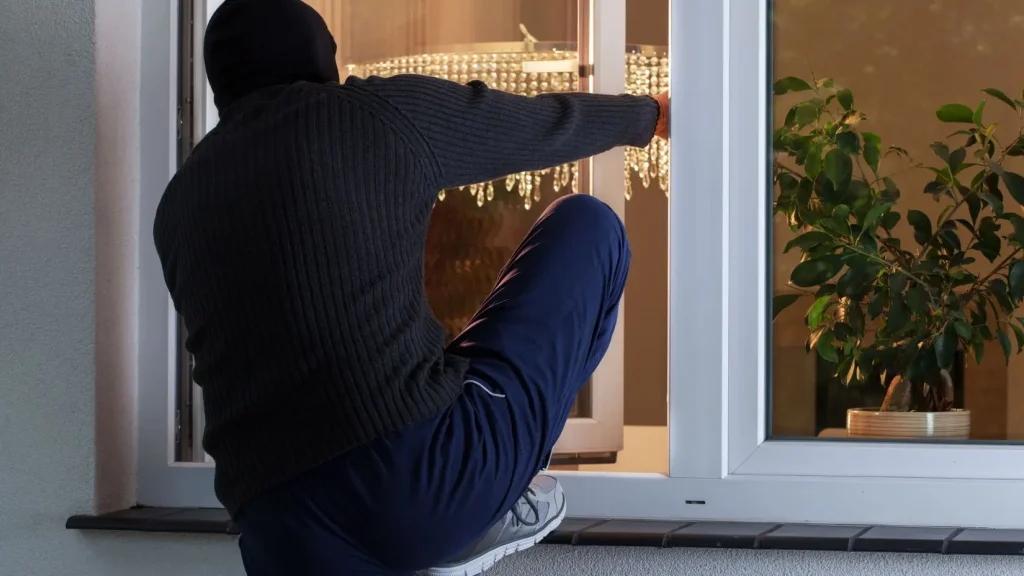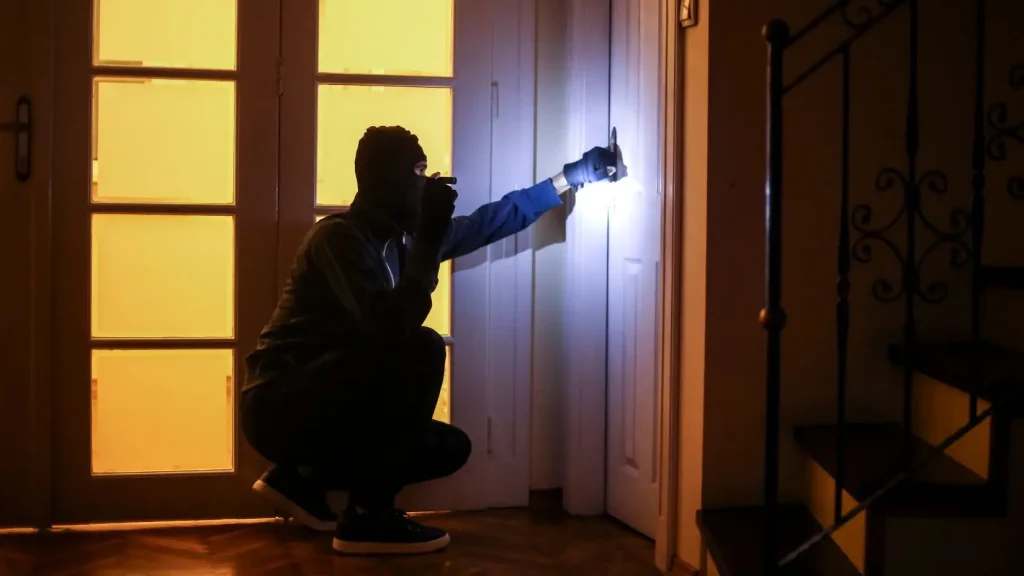11 Suspects Charged After California Burglary Spree That Damaged Home
I’ve seen a lot of wild burglary stories in California, but this one hits different. Imagine leaving your house for a few weeks, only to come back and find not just broken locks and missing stuff—but actual bears living inside.
That’s what happened to a 64-year-old woman in Magalia, a remote part of Northern California. Over several weeks, a group of 11 people allegedly broke into her home again and again. They didn’t just steal things—they wrecked the place so badly that she had to leave it behind. And with no one around, wild animals moved in. Yes, literal bears.
Now those 11 suspects have been hit with first-degree burglary charges. But this wasn’t just a one-time thing. It was a slow, damaging unraveling of someone’s safety, space, and peace of mind.
This story isn’t just about crime—it’s about how vulnerable remote homeowners can be, and how easily that vulnerability can spiral.
How It Started—and Just How Bad It Got?
If you’ve ever lived in a quiet, wooded area, you probably know how peaceful it can be. But for one woman in Magalia, that peace turned into a nightmare in spring 2024.
According to a CBS Sacramento report, the break-ins began on April 17, 2024 when the homeowner—64 years old—started noticing things out of place. Not once, but over and over, people came back to her property.
By the time she realized how bad it was, the damage had gone way beyond theft. Her home wasn’t just ransacked—it was trashed. Windows broken, furniture ruined, personal items destroyed.
And then came the part no one expects: bears moved in. Yep. Because of the open access and the condition of the home, wildlife made itself at home. Imagine coming back to that.
The house was so badly damaged, she couldn’t keep living there. She had to leave.
That hits hard, right? It’s not just about losing stuff. It’s about losing your space, your safety, your routine. If you’ve ever left your house for more than a week, you know that uneasy feeling. Now imagine knowing people and animals were living in it while you were gone.
Who’s Behind It—and What They’re Facing Now?

Let’s be clear—this wasn’t a random thief sneaking in once and disappearing. What happened in Magalia was organized, repeated, and deeply personal. And now, 11 people are facing felony charges for it.
According to the Associated Press, all 11 have been charged with first-degree residential burglary. That means prosecutors believe this wasn’t a heat-of-the-moment crime. It was intentional. It was planned.
Here are the names of those charged:
- Sean Anthony Crua, 43, of Magalia
- Nicholas Brown, 37, of Magalia
- Mary Ricca, 59, of Magalia
- Sefo Sipa, 37, of Paradise
- Gavin Dominguez-Feathers, 25, of Magalia
- Joey Kupiheanapeahi, 42, of Magalia
- Breanna Maier, 32, of Magalia
- Michael Barnett, 29, of Magalia
- Matthew Bacon, 44, of Magalia
- Lindsey McLaughlin, 37, of Magalia
- Kayla Goebel, 34, of Magalia
Some of them are out on $50,000 bail. Others are still in custody. And officials say five more suspects are under investigation and may be charged soon.
What shocks me most is the pattern. This wasn’t a smash-and-grab. These people kept coming back. They knew the homeowner had left. They saw the opening and exploited it. Over and over.
And let’s be real—you and I both know this kind of thing doesn’t just happen in movies. When a group gets bold, they take over. That’s exactly what unfolded here. One homeowner’s nightmare became a repeat crime scene, and no one stepped in until it was too late.
It raises a tough question for anyone living outside the city: how safe are you, really, when the wrong people decide your home is theirs for the taking?
Similar patterns of organized group crimes have been emerging in other regions too—like this armed robbery case in Florence where multiple suspects are still at large.
When Burglars Leave… Bears Move In
Let’s talk about something you don’t usually hear in a burglary case—wildlife intrusion.
Because the home was left wide open, the place started attracting bears. Not just one. Multiple. And this wasn’t someone’s backyard chicken coop—they moved inside the house. Walked around. Dug through what was left. Left behind a mess that goes way beyond what humans had already done.
The idea that you could lose your home to people is terrible. But losing it to nature after that? That hits another level.
It makes you think: once your space is violated, it becomes fair game. Not just for people, but for the wild too. When the homeowner walked away for her own safety, she probably never imagined four-legged intruders finishing what the two-legged ones started.
Why Remote Homes Are Easy Targets?
Now, you might be wondering—why did this happen here?
It’s not random. Remote homes like this one in Magalia are perfect targets for repeat burglary. Think about it: long driveways, no neighbors nearby, slow police response time. Burglars know these patterns. They watch for signs of vacancy. If you’ve ever left your cabin or weekend home unattended, this should be a wake-up call.
I’ve spoken with people who live in places like this, and they all say the same thing: “It’s peaceful, but you’re on your own out here.” That freedom is part of the charm. But it’s also the risk.
And when criminals know no one’s watching—or worse, that someone already gave up the property—they don’t stop. They settle in. They treat it like their turf.
If that doesn’t concern you as a homeowner, it should. Because as this story shows, once they get in, they don’t leave quietly.
Sadly, the trauma of violent home invasions isn’t isolated—a recent tragedy in Towson ended with the death of a teen during a break-in gone horribly wrong.
The Bigger Picture: Burglary Trends Across California
Sadly, this isn’t an isolated case. California has seen a steady uptick in rural and semi-rural home burglaries, especially post-pandemic.
FBI data shows that while urban burglaries have started to decline, remote-area break-ins are climbing. Thieves aren’t just snatching and running anymore—they’re planning, targeting, and returning to the same homes multiple times. Especially if no one lives there full-time.
And here’s something you might not have heard: organized burglary rings, sometimes tied to “crime tourism,” have also played a role. Law enforcement in California and Nevada have flagged groups who travel with the sole intent of hitting homes in remote communities.
That might not be the case here—but the pattern’s eerily familiar.
If you own property outside city limits, this matters. Because even if you’re not the next victim, your neighbor could be—and that opens the door, literally, for what happened in Magalia to happen again.
I follow updates like this through a few community alert groups—it’s helped me stay ahead on similar cases. If you want to stay in the loop with stories that actually matter, you can tap into this real-time update feed I use.
What It Meant for the Victim: Not Just a House, a Life Disrupted

I want you to pause and think about something.
What would it feel like to walk into your home and not recognize it anymore?
That’s what this 64-year-old woman in Magalia went through. She didn’t just lose a few belongings—she lost her peace, her routine, her place in the world. After repeated break-ins, she couldn’t live there anymore. And once the bears showed up, there was no going back.
We often talk about crime in terms of property damage or arrests. But rarely do we talk about what it does to the person left behind. The cost wasn’t just financial—it was emotional. Her safe space was violated. Again and again. And now, it’s gone.
If you’ve ever had a break-in, even once, you know how long it takes to feel normal again. Now imagine that times ten.
What would you have done if this happened in your neighborhood? Drop your thoughts in the comments—I’m reading them all.
What the Law Is Doing—and What Comes Next
The Butte County District Attorney’s Office isn’t letting this go quietly. They’ve charged all 11 suspects with first-degree burglary, and there are still more arrests likely. According to reports, the court dates are set for July 9 and 10, and the investigation is far from over.
Some suspects were granted bail. Others are still locked up. But here’s what matters to you: law enforcement is treating this as more than a one-off. They’re looking at it as part of a pattern—a community-wide threat, not just a personal tragedy.
DA Mike Ramsey called the burglary spree “a shocking violation,” especially because the group kept returning. That kind of escalation isn’t just criminal—it’s calculated.
This tells me one thing: if you live in a remote area, the legal system is starting to take these repeat crimes more seriously. But justice is slow. And in the meantime, the burden still falls on homeowners like you to protect what’s yours.
In places like Michigan, local authorities are facing similar concerns—this Cadillac case led to new conversations around rural crime response and legal gaps.
How You Can Protect Your Remote Property—Starting Now
Let’s talk solutions—because if this shook you, it should.
Remote homeowners need a different level of defense. Here’s what you can start doing today:
- Install motion-triggered cameras that notify your phone
- Get reinforced doors and locks, not just standard deadbolts
- Use solar-powered lights for remote areas with no electricity
- Secure sheds, garages, and trailers—they’re often entry points
- Work with neighbors (yes, even if they’re miles away) to start a simple check-in system
Also, if you’re not living there full-time, consider smart security systems that simulate activity—lights turning on, music playing, even fake dog bark alarms. I know that sounds dramatic, but after seeing what happened here? It’s more than worth it.
Could Policy or Programs Prevent This in the Future?
Here’s the bigger question: why aren’t remote homes better protected by policy?
California spends millions on wildfire protection, yet burglaries in the same high-risk areas get less attention. That needs to change. Programs that help rural homeowners install security systems—or tax breaks for protective upgrades—could make a huge difference.
Also, let’s talk about the “crime tourism” angle. While it’s not confirmed in this case, similar patterns have been reported elsewhere in California—organized groups targeting isolated homes, then disappearing. Some even use visa loopholes.
This is a chance for state legislators to get proactive. Instead of waiting until someone’s life is turned upside down, support systems need to be in place before the first door is kicked in.
You and I both know laws move slow. But that doesn’t mean we shouldn’t push for smarter protections—especially for the people living in places where no one else is watching.
Final Thoughts
This wasn’t just a burglary spree. It was a full-blown invasion—slow, deliberate, and devastating.
One woman lost her home. A whole town got spooked. And 11 people now face felony charges. But the deeper story here is about vulnerability. When no one’s watching, who’s really safe?
If you take anything away from this, let it be this: protect what’s yours before someone else decides it belongs to them. Not just with locks and lights, but with people who’ve got your back. Neighbors. Family. Systems.
And if you live in a city, don’t scroll past this thinking it doesn’t apply to you. Because whether you’re in the woods or in the suburbs, all it takes is one group to find your blind spot.
Want to see how other home invasions across the U.S. unfolded? Explore our latest reports on crime and safety on our Home Incidents section.
Disclaimer: This article is based on publicly available news reports and official sources as of July 2025. All individuals mentioned are presumed innocent until proven guilty in a court of law. The content is intended for informational purposes only, not legal or security advice.


